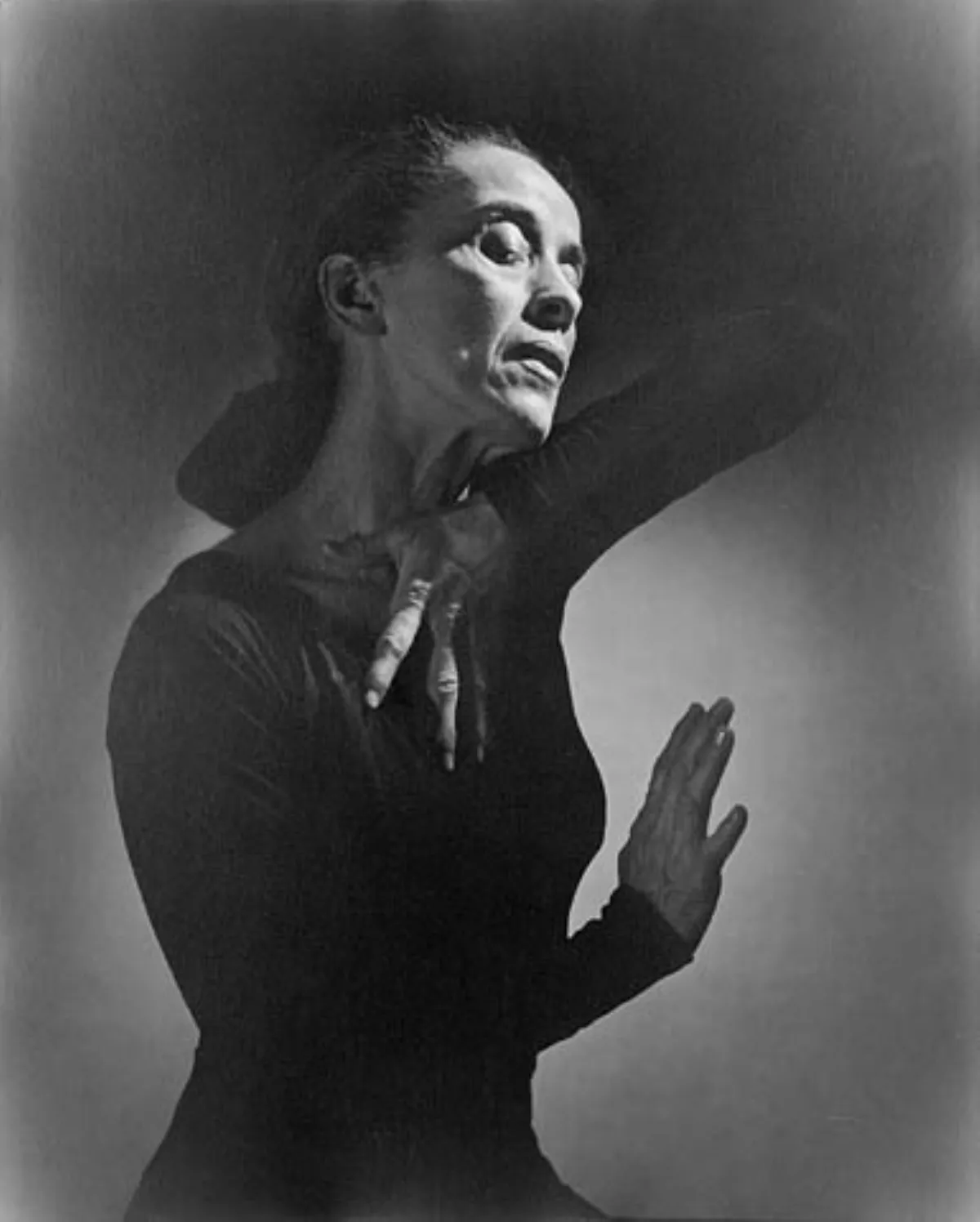 1.
1. Martha Graham was an American modern dancer, teacher and choreographer, whose style, the Graham technique, reshaped American dance and is still taught worldwide.

 1.
1. Martha Graham was an American modern dancer, teacher and choreographer, whose style, the Graham technique, reshaped American dance and is still taught worldwide.
Martha Graham was the first dancer to perform at the White House, travel abroad as a cultural ambassador, and receive the highest civilian award of the US: the Presidential Medal of Freedom with Distinction.
Martha Graham's father was a third-generation American of Irish descent.
Martha Graham's mother, Jane Beers, was a second-generation American of Irish, Scots-Irish, and English ancestry, and who claimed to be a tenth-generation descendant of Myles Standish.
The Graham family moved to Santa Barbara, California, when Martha was fourteen years old.
In 1922, Martha Graham performed one of Shawn's Egyptian dances with Lillian Powell in a short silent film by Hugo Riesenfeld that attempted to synchronize a dance routine on film with a live orchestra and an onscreen conductor.
Martha Graham left the Denishawn establishment in 1923 in order to become a featured dancer in the Greenwich Village Follies revue for two years.
In 1925, Martha Graham was employed at the Eastman School of Music where Rouben Mamoulian was head of the School of Drama.
Mamoulian left Eastman shortly thereafter and Martha Graham chose to leave, even though she was asked to stay on.
Martha Graham was on the faculty of Neighborhood Playhouse School of the Theatre when it opened in 1928.
One of Martha Graham's students was heiress Bethsabee de Rothschild with whom she became close friends.
When Rothschild moved to Israel and established the Batsheva Dance Company in 1965, Martha Graham became the company's first director.
Martha Graham's technique pioneered a principle known as "contraction and release" in modern dance, which was derived from a stylized conception of breathing.
Contraction and release: The desire to highlight a more base aspect of human movement led Martha Graham to create the "contraction and release", for which she would become known.
One of Martha Graham's most known pieces that incorporates the American life theme is Appalachian Spring.
In 1936, Martha Graham created Chronicle, which brought serious issues to the stage in a dramatic manner.
However, the United States was not represented in the Art Competitions as Martha Graham refused the invitation by stating:.
Goebbels himself wrote her a letter assuring her that her Jewish dancers would "receive complete immunity" it was not enough for Martha Graham to accept such an invitation.
The dance expressed American ideals and democracy as Martha Graham realized that it could empower men and inspire them to fight fascist and Nazi ideologies.
Martha Graham officially joined her troupe the following year, dancing male lead in a number of Graham's works.
Martha Graham left her troupe in 1951 and they divorced in 1954.
Martha Graham choreographed and danced the title role, spending almost the entire duration of the performance on the stage.
Martha Graham collaborated with many composers including Aaron Copland on Appalachian Spring, Louis Horst, Samuel Barber, William Schuman, Carlos Surinach, Norman Dello Joio, and Gian Carlo Menotti.
Martha Graham resisted requests for her dances to be recorded because she believed that live performances should only exist on stage as they are experienced.
Martha Graham considered Philippe Halsman's photographs of Dark Meadow the most complete photographic record of any of her dances.
In 1952 Martha Graham allowed taping of her meeting and cultural exchange with famed deaf-blind author, activist and lecturer Helen Keller, who, after a visit to one of Martha Graham's company rehearsals became a close friend and supporter.
Martha Graham was inspired by Keller's joy from and interpretation of dance, utilizing her body to feel the vibration of drums and of feet and movement moving the air around her.
Martha Graham's health declined precipitously as she abused alcohol to numb her pain.
Martha Graham's last completed ballet was 1990's Maple Leaf Rag.
Martha Graham choreographed until her death in New York City from pneumonia in 1991, aged 96.
Martha Graham was cremated, and her ashes were spread over the Sangre de Cristo Mountains in northern New Mexico.
Martha Graham has been sometimes termed the "Picasso of Dance" in that her importance and influence to modern dance can be considered equivalent to what Pablo Picasso was to modern visual arts.
Martha Graham's impact has been compared to the influence of Stravinsky on music and Frank Lloyd Wright on architecture.
Martha Graham has been said to be the one that brought dance into the 20th century.
Martha Graham performed in 2007 at the Museum of Contemporary Art, Chicago, with a program consisting of: Appalachian Spring, Embattled Garden, Errand into the Maze, and American Original.
In 1957, Martha Graham was elected a Fellow of the American Academy of Arts and Sciences.
Martha Graham was awarded the Presidential Medal of Freedom in 1976 by President Gerald Ford.
In 1984, Martha Graham was awarded the highest French order of merit, the Legion of Honour by then Minister of culture Jack Lang.
In 1998, Martha Graham was posthumously named "Dancer of the Century" by Time magazine, and one of the female "Icons of the Century" by People.